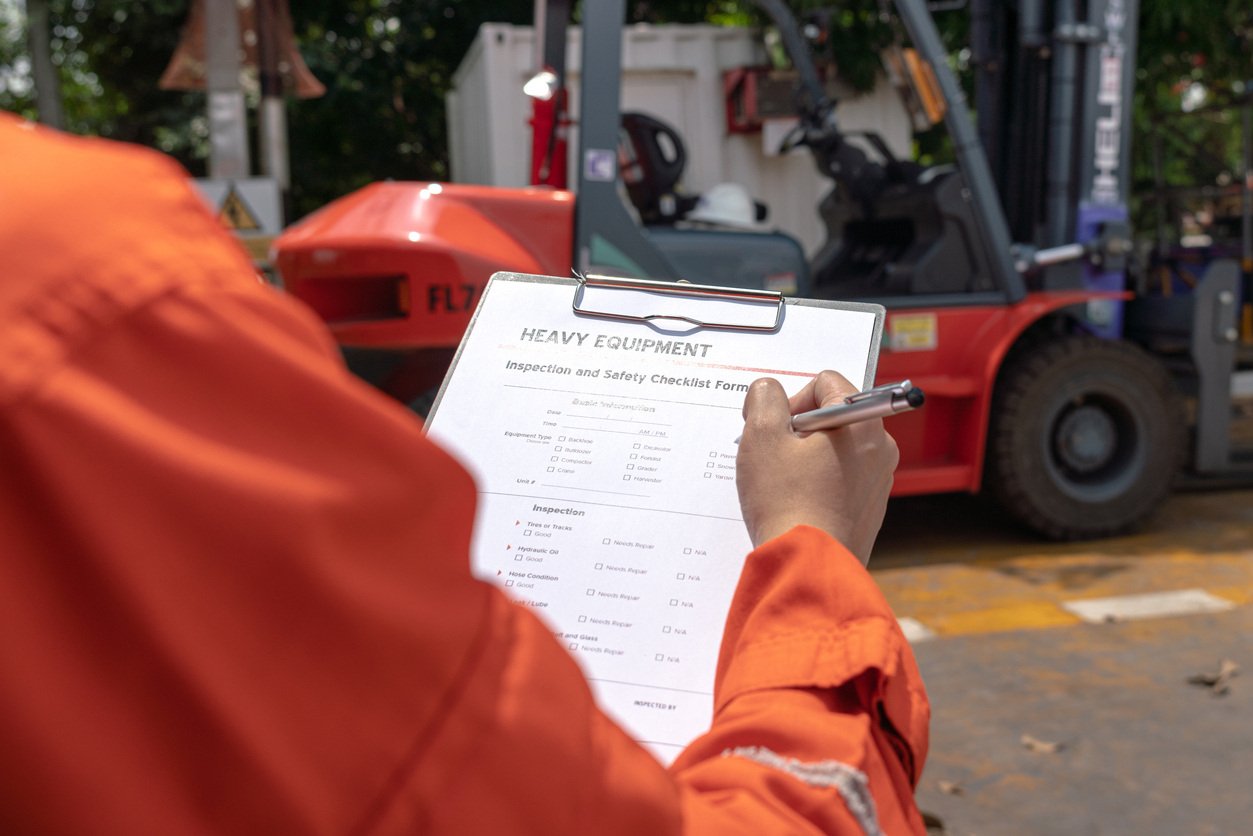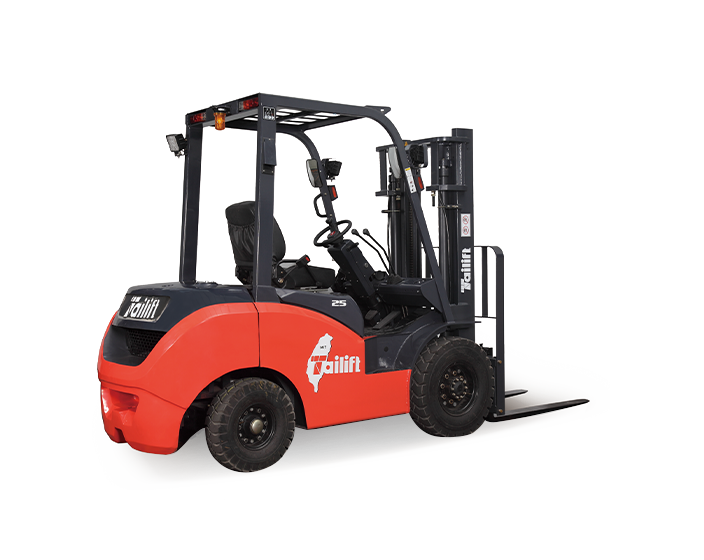
Spring Cleaning for Your Forklift Fleet
As spring makes its debut, it’s time to focus on more than just cleaning your office or warehouse–your forklift fleet needs attention, too. Winter can take a toll on your equipment, and performing regular maintenance ensures your forklifts continue to run safely and efficiently. In this blog, we’ll go over important spring maintenance for your forklifts, from necessary inspections to addressing any damage caused by the winter months. With a proper spring tune-up, you can avoid expensive repairs, reduce downtime, and help your forklifts last longer.
Inspections: The Key to Forklift Safety and Reliability
The first step in forklift spring cleaning is conducting a thorough inspection. Forklifts are essential for ensuring smooth operations in warehouses, manufacturing plants, and distribution centers. However, without proper maintenance, they can become safety hazards. Regular inspections are crucial for identifying potential issues, protecting your team, and reducing unexpected downtime.
Key Areas to Review During Forklift Inspections
- Forklift Components: The structural integrity of your forklift is essential for safe operation. Inspect critical parts like the frame, forks, and mast for cracks, damage, or excessive wear. Even minor issues can escalate if left unaddressed, potentially compromising safety and performance.
- Hydraulic System: The hydraulic system powers the forklift’s lifting mechanism. Check for any fluid leaks or signs of damage to hoses and cylinders. Low or contaminated hydraulic fluid can reduce lifting efficiency, and leaks can lead to larger operational or environmental issues.
- Tires: Tires play a vital role in stability and traction. Look for wear and tear, such as flat spots, cracks or punctures. Ensure the tires are properly inflated to maintain load capacity and reduce the risk of tipping.
- Battery Maintenance for Forklifts: Cold weather can negatively impact battery performance for forklifts. Clean any corrosion with a baking soda solution to maintain optimal functionality.
By performing regular inspections, you can identify and address potential problems early, reducing the risk of forklift hazards and avoiding costly repairs or downtime.
Post-Winter Maintenance: Repairing Damage and Preventing Forklift Hazards
Winter can take a toll on forklifts, especially when they operate in freezing temperatures or on icy surfaces. Exposure to salt and moisture can cause rust, corrosion, and damage to critical components. To prepare your forklift fleet for the demands of spring and summer, it’s essential to perform a thorough cleaning and maintenance routine after the winter months.
Post-Winter Maintenance Checklist
- Cleaning Forklift Components: Winter often leaves forklifts coated in salt, dirt, and grime. Wash them thoroughly, focusing on areas like the undercarriage, lift chains, and mast. Salt buildup can lead to corrosion if not removed. After cleaning, dry the forklifts completely to avoid moisture accumulating in sensitive areas.
- Lubricating Moving Parts: Cold weather can make moving parts stiff or prone to rust. Apply proper lubrication to forklift components like the mast and lift chains. Lubrication reduces friction, minimizes wear, and ensures smooth operation.
- Battery Checks: Batteries are highly affected by temperature changes. Inspect for corrosion, leaks, or other damage. Clean battery terminals and, if necessary, top up fluid levels using distilled water. Since cold weather can shorten battery life, confirm that each battery is fully charged and in good condition.
- Inspect Hydraulic Fluids and Hoses: The hydraulic system is critical for lifting and moving loads. Cold temperatures can thicken hydraulic fluids, reducing efficiency. Check fluid levels and inspect hoses for leaks or cracks to ensure smooth operation and avoid costly repairs.
By tackling these post-winter maintenance tacks, you’ll enhance the performance of your forklift fleet and prevent long-term issues that could disrupt operations or lead to downtime.
Regular Maintenance to Prevent Forklift Hazards
A key part of forklift spring cleaning is making sure your equipment stays in top shape all year. Regular maintenance helps prevent forklift hazards, extend the life of your forklifts, and reduce the chances of costly repairs. Key areas to focus on for regular maintenance include:
- Brakes: Brakes are essential for safe forklift operation, allowing operators to stop safely, especially when carrying heavy loads. Ensure that the brake pads are in good condition and the brake system is properly adjusted. Check for any fluid leaks or loss of pressure, as these issues can reduce braking efficiency and compromise safe forklift operation.
- Lights and Horns: Forklifts need working warning systems. Check that the lights, horn, and other warning devices are functioning properly. These forklift components improve forklift safety, preventing accidents in busy warehouse environments.
- Forks and Mast: Ensure the forks are properly aligned and free of damage, such as bending, cracking, or excessive wear. The mast should move smoothly up and down without sticking. Also, make sure the lift chains are well-lubricated and free of rust or wear. The forks should be cleaned, clear of debris, and capable of holding the weight capacity specified by the manufacturer.
Taking care of these main components helps ensure safe forklift operation and prevents hazards that could cause accidents or damage to equipment.
Battery Maintenance for Electric Forklifts
For businesses using electric forklifts, the battery serves as the heart of the power system. However, cold weather can take a toll on batteries, affecting their performance and shortening their lifespan. To get your electric forklifts ready for spring, follow these essential battery maintenance steps:
- Battery Inspection: Check the forklift’s battery for any signs of damage, corrosion or leaks. Clean the battery terminals with a baking soda solution to remove corrosion and restore power flow.
- Fluid Levels: If your forklift uses a wet-cell battery, check the water levels in each cell. If needed, add distilled water to keep the battery cells from drying out. Avoid using tap water, as it can introduce minerals that may cause damage.
- Charging Systems: Make sure your electric forklifts are charged properly. Overcharging or undercharging can decrease battery efficiency and shorten its lifespan. Use the right charger for the specific battery type to avoid problems like overheating or power loss.
Proper battery maintenance is essential not only for reliable forklift performance but also for minimizing unexpected downtime. A well-maintained battery ensures your electric forklifts are ready to operate whenever needed.
The Benefits of Forklift Spring Cleaning
Regular spring maintenance for forklifts provides significant benefits for both your business and employees. It enhances safety, boosts efficiency, and ensures reliable operations. Here’s why keeping up with routine maintenance is essential.
Improved Safety
Regularly cleaned, inspected, and maintained forklifts are less likely to break down or cause accidents. Proper maintenance plays a crucial role in forklift safety, ensuring the operator has full control of the equipment and reducing the chances of incidents in high-traffic warehouse areas.
Increased Efficiency
Forklifts that run smoothly, without problems like stuck lift chains, low hydraulic fluid, or battery issues, are more efficient. This leads to higher productivity and less downtime for repairs or maintenance.
Extended Equipment Lifespan
Forklifts are a big investment for any business. Regular maintenance helps extend the life of your fleet by catching small issues before they turn into big problems. Keeping your forklifts in good condition reduces the need for major repairs and ensures you get the most value from your investment.
Cost Savings
Taking care of maintenance before problems become serious helps you avoid expensive repairs or replacements. Regular inspections and cleaning also prevent downtime, which can hurt productivity and increase costs.
The Spring Cleaning Checklist: A Quick Recap
To get your forklift fleet ready for the busy months ahead, follow this spring cleaning checklist:
- Complete forklift inspection (check components, tires, hydraulics, and battery)
- Thorough cleaning (wash off salt and grime)
- Lubricate moving parts (mast, lift chains, and hydraulics)
- Check brakes, lights, and horns
- Inspect and maintain the battery for forklifts (clean terminals and check fluid levels)
- Address post-winter damage (look for rust, leaks, or frozen parts)
Keep Your Forklift Fleet in Top Shape All Year
Spring cleaning for your forklift fleet isn’t just about making them look good – it’s about making sure your equipment is in top shape to keep operations running smoothly. By doing thorough inspections, addressing any post-winter damage, and ensuring key components like the battery and hydraulic systems are working well, you’re taking steps to improve forklift safety, efficiency, and productivity. This seasonal maintenance helps extend the life of your forklifts, reduces the chance of accidents, and prevents expensive repairs. By investing in your fleet now, you’re setting your forklifts up for safe and efficient operation for years to come. At Tailift Canada, we know how important both seasonal and regular maintenance are for getting the most out of your forklifts. Our team is here to guide you through every step of the process. Stay tuned for more tips and blogs on forklift maintenance, safety, and industry trends. If you have questions about this blog or our Tailift Forklifts, don’t hesitate to reach out – we’re happy to help! And if you’re interested in becoming a dealer for Tailift Canada, we’d love to talk to you about how we can help grow your business with a diverse product line and support.
